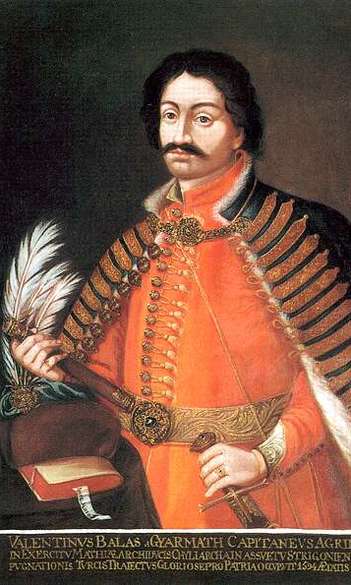Department of Early Hungarian Literature

Leadership
Farkas Gábor Kiss Head of Department, Habil. Associate Professor
Room: 409
E-mail: kiss.farkas@btk.elte.hu
Faculty
Gábor Förköli Assistant Professor
Room: 415
E-mail: forkoli.gabor@btk.elte.hu
Gyula Laczházi Habil. Associate Professor
Room: 410
E-mail: laczhazi.gyula@btk.elte.hu
Borbála Sára Lovas Assistant Professor
Room: 415
E-mail: lovas.borbala@btk.elte.hu
Levente Seláf Habil. Associate Professor
Room: 316
E-mail: selaf.levente@btk.elte.hu
Géza Szentmártoni Szabó Retired Assistant Professor
Room: 410
E-mail: szentmartoni.szabo.geza@btk.elte.hu
Overview
The department is responsible for teaching medieval and early modern Hungarian literature, educating students and prospective scholars interested in this period, conducting research, editing texts, and promoting scholarly knowledge. According to general consensus in literary historiography, early Hungarian literature spans from the beginnings of Hungarian literacy to the formation of modern literary systems and institutions—that is, roughly from the time of the foundation of the state to the end of the 18th century.
The concept of literature across these nearly eight centuries differs significantly from the modern idea of literature that began forming in the mid-18th century. Use of the Hungarian language is not a strict criterion, as Latin remained the dominant language of literary communication and culture. The ideal of autonomous, fictional, entertaining literature had not yet emerged; literature still served the triple function of teaching, delighting, and moving (docere—delectare—movere).
Therefore, specialists in the field deal not only with literary works in the modern sense but also with scientific and functional texts: liturgical writings, historical works, diaries, travelogues, sermons, occasional poems, and more. Research into early Hungarian literature traditionally has strong ties to cultural history.
The department is involved in all three cycles of Bologna-type higher education. In the BA program, it offers introductory, historical, and theoretical courses on the period for students in Hungarian and literary studies. In the MA programs (Renaissance Studies, Hungarian Language and Literature, and Literature and Cultural Studies), it provides courses within the medieval and early modern specialization, as well as some core subjects. In the PhD program, the department contributes to two doctoral programs: Renaissance Literature and Hungarian Baroque Literature.
MTA–ELTE “Humanism in East-Central Europe” Momentum Research Group
Historical Intellectual Networks: New Tools for Examining the Respublica Litterari
Our research group, supported by the MTA Momentum Grant, investigates literary works created between 1420 and 1620 in the Kingdom of Hungary and the intellectual career paths of their authors. The project includes the planned publication of several previously unpublished texts (e.g., Philosophia naturalis by János Apáczai Csere, Sermons by György Enyedi, Correspondence by János Zsámboky), as well as an English-language encyclopedia featuring several hundred humanist authors. The project’s main goal is to publish an English-language lexicon modeled on the German Verfasserlexikon, introducing approximately 400–450 authors who lived in Hungary between 1420 and 1620 and wrote in Latin or in the vernacular following classical models. This textual and intellectual-historical research provides the foundation for mapping the linguistic, confessional, sociological, and career patterns of early modern intellectuals. Unlike earlier summaries, our approach focuses not primarily on the authors but on the context and material survival of texts—where and how works were preserved, whether in manuscript or print, how they were read by contemporary audiences, and what traces of that readership remain.
Project website: hece.elte.hu
History
Within the classical, Latin-based university education system, the demand for teaching Hungarian language and literature began to emerge in the second half of the 18th century. Initially, only the Hungarian language was taught as an extraordinary subject. Then in 1791, the time came for Hungarian language and literature to be institutionalized as a university discipline. The first Hungarian department was established at our university, already operating in Pest. The first professor, András Vályi, was appointed by Emperor Leopold II. Subsequent professors of the shared language and literature chair were:
- András Vályi (1791–1801)
- Miklós Révai (1802–1807)
- Ferenc Czinke (1807–1830)
- István Horváth (1830–1846)
- János Garay (1848–1849)
- Ferenc Toldy (1861–1875)
In 1876, literary history was separated from the teaching of the Hungarian language and continued its activities within an independent department. The first appointed professor of independent Hungarian literary history was Pál Gyulai, who held the position from 1876 to 1902. After his retirement, two professors simultaneously taught Hungarian literary history, alternating lectures on earlier literature and 19th-century literature. In fact, it can be regarded that from 1904 onward, a department of early and a department of modern Hungarian literature operated side by side. Professors of the pre-war period included Károly Széchy (1904–1906), Lajos Katona (1908–1910), László Négyesy (1911–1923), János Horváth (1923–1948), Frigyes Riedl (1904–1921), Elemér Császár (1923–1940), and Zsolt Alszeghy (1940–1949).
The independent Department for Early Hungarian Literature was established in 1953, when — based on historical periodization — the instructors of Hungarian studies were organized into four separate departments. Initially named the Department of Literary History No. IV, and from the 1960s onward known as the Department of Early Hungarian Literary History, the first head of the early literature department was Gábor Tolnai. After Tolnai’s retirement, the department was led by Andor Tarnai from 1980 to 1993, by Sándor Iván Kovács from 1993 to 2002, and by Iván Horváth from 2002 to 2009. He was succeeded by Géza Orlovszky, who served as head of department until 2017.
Illustration: Ismeretlen festő: Balassi Bálint portréja (Second half of the 17th century)
